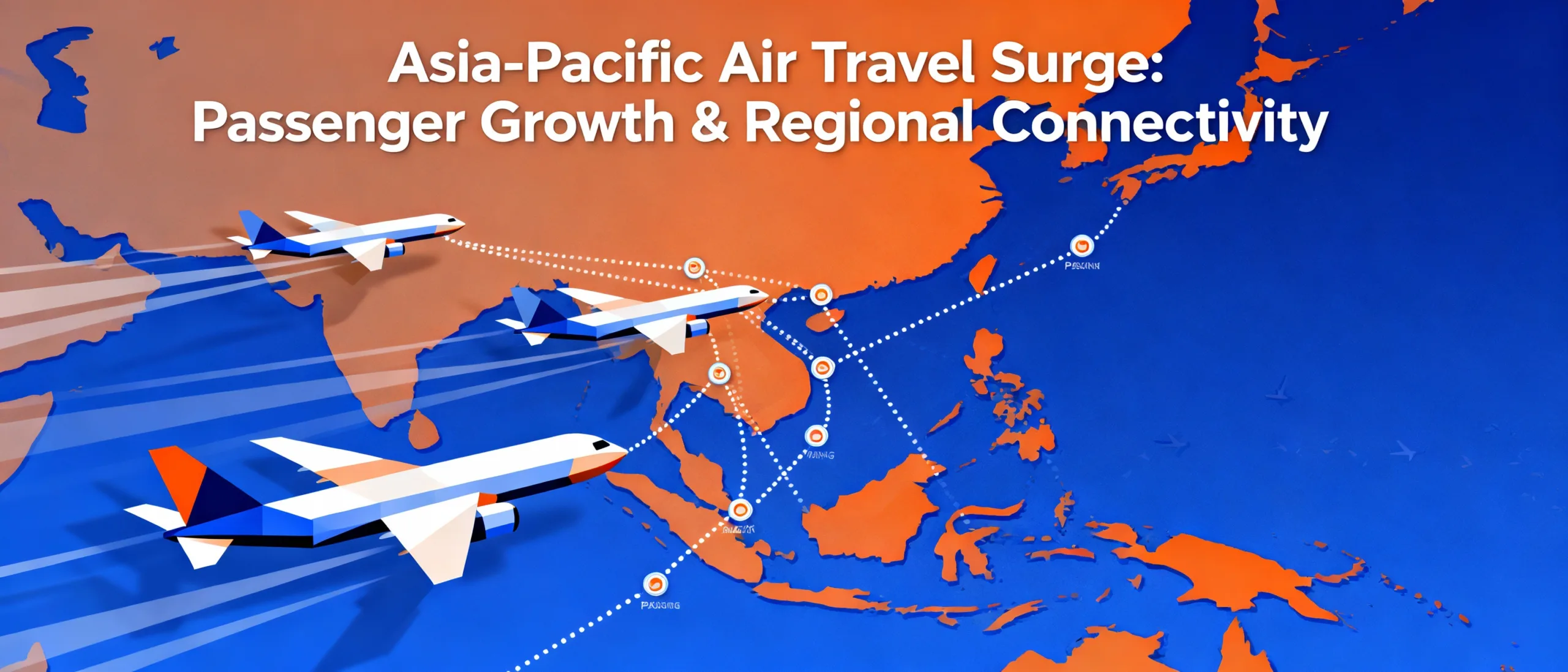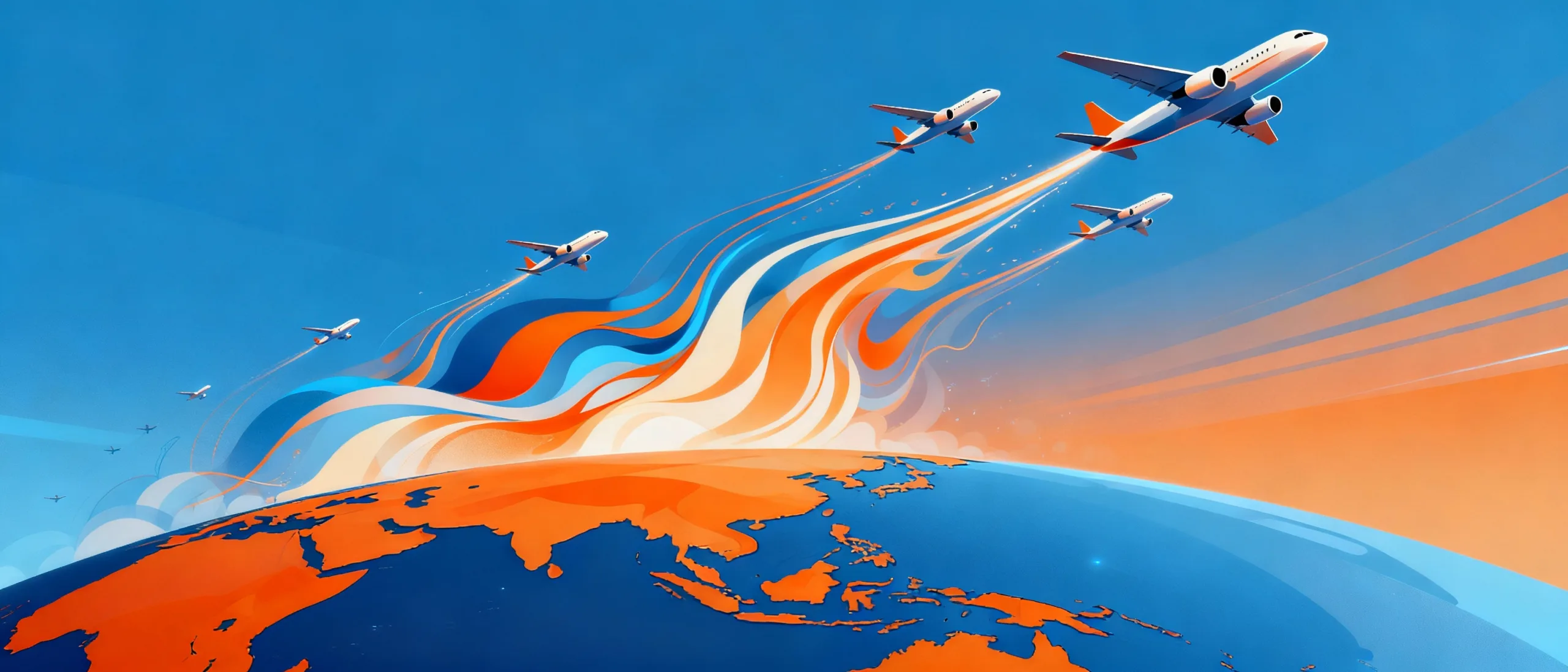Key Insights
- Airbus projects 19,560 new aircraft deliveries in Asia-Pacific over the next 20 years, representing nearly half of global single-aisle and wide-body demand.
- India and China are set to drive the region’s growth, with annual passenger traffic rising at 4.4% — outpacing the global average.
- Industry experts highlight significant economic opportunities for suppliers and workforce expansion as aviation rebounds in the region.
Asia-Pacific’s Soaring Aircraft Demand: Airbus Regional Forecast
Airbus has released a bold new regional forecast, projecting the delivery of 19,560 new aircraft in Asia-Pacific by 2045. This extraordinary figure accounts for 47% of global single-aisle deliveries and 43% of wide-body demand, underscoring the region’s pivotal role in shaping the future of commercial aviation. According to AviationA2Z, Airbus expects this surge to be driven by both fleet expansion and the replacement of older, less efficient planes.
Aviation leaders and trade publications are emphasizing the scale of this upswing, noting that Asia-Pacific is now set to account for nearly half of global aircraft demand. The Times of India highlights that India and China together will drive almost half the region’s demand, thanks to booming middle classes and rapid urbanization.
Asia -Pacific Passenger Growth Outpaces Global Average

The projected aircraft need is underpinned by an expected annual passenger growth rate of 4.4% in Asia-Pacific, notably higher than the global average of 3.6%. This dynamic growth is particularly pronounced in domestic and short-haul travel, prompting airlines to prioritize single-aisle jets for regional connectivity. According to Nation Thailand, around 16,100 of the new aircraft will be single-aisle jets, reflecting the region’s focus on short-haul routes.
Industry analysts note this trend as a strong indicator of Asia-Pacific’s ongoing recovery and robust future outlook, with local media highlighting new opportunities for suppliers, manufacturers, and aviation workforce expansion. The Association of Asia-Pacific Airlines (AAPA) annual meeting echoed these sentiments, confirming the region’s outsized role in global aviation growth.
Economic Opportunities and Industry Impact of Soaring Aircraft Demand
Over the next 20 years, the Asia-Pacific region will see a big rise in demand for new airplanes. Airlines will be updating their fleets with more modern and fuel-efficient aircraft. This push to renew fleets will not only help airlines to save fuel, lower costs, but also reduce the impact of aviation on the environment. Airbus says that swapping older planes for new models is key to staying competitive as the market quickly changes.
Growing Market and Economic Value
Starting in 2025, the aviation industry in Asia-Pacific is worth about US$105 billion. Over the next five years, as passenger numbers and cargo needs grow, the market is expected to reach US$160 billion by 2030. Looking further ahead, by 2044, Asia-Pacific, China, and South Asia will make up 45% of global aviation service demand, worth around US$311 billion.
Creating Jobs and Economic Growth
As more planes are added and airlines expand, many new jobs will be created. For every job in aviation—like pilots, engineers, and technicians—five to seven more jobs are added in areas like hotels, shops, transport, and factories. With nearly 19,560 new planes arriving, hundreds of thousands of direct jobs and millions of indirect jobs will be needed across the region. Even a new flight route can create over 130 jobs in surrounding businesses.
Building a Strong Aviation Ecosystem
This growth will be supported by five main areas of aviation services:
- Off-wing maintenance (like fixing parts and providing spares): expected to be a US$218 billion market by 2044.
- On-wing maintenance (checking and fixing planes): US$54 billion market.
- Digital and connectivity solutions: set to grow to US$26 billion and help airlines and airports work better, saving about US$83 billion.
- Training: about 2.35 million new jobs will be needed for pilots, technicians, and flight crews by 2044.
- Modifications and upgrades: things like cabin improvements and tech upgrades, worth US$17 billion.
In summary:
From now until 2045, increasing demand for aircraft will help the aviation industry modernize, create jobs, and grow the economy in Asia-Pacific. Each new plane delivered brings new business, innovative technology, and opportunities for people throughout the region.
Join the Conversation
Stay connected with the latest aviation and tech industry news and analysis—join our WhatsApp group “WireUnwired Research” or connect on LinkedIn with WireUnwired Research for real-time updates and expert discussions.
Discover more from WireUnwired Research
Subscribe to get the latest posts sent to your email.




